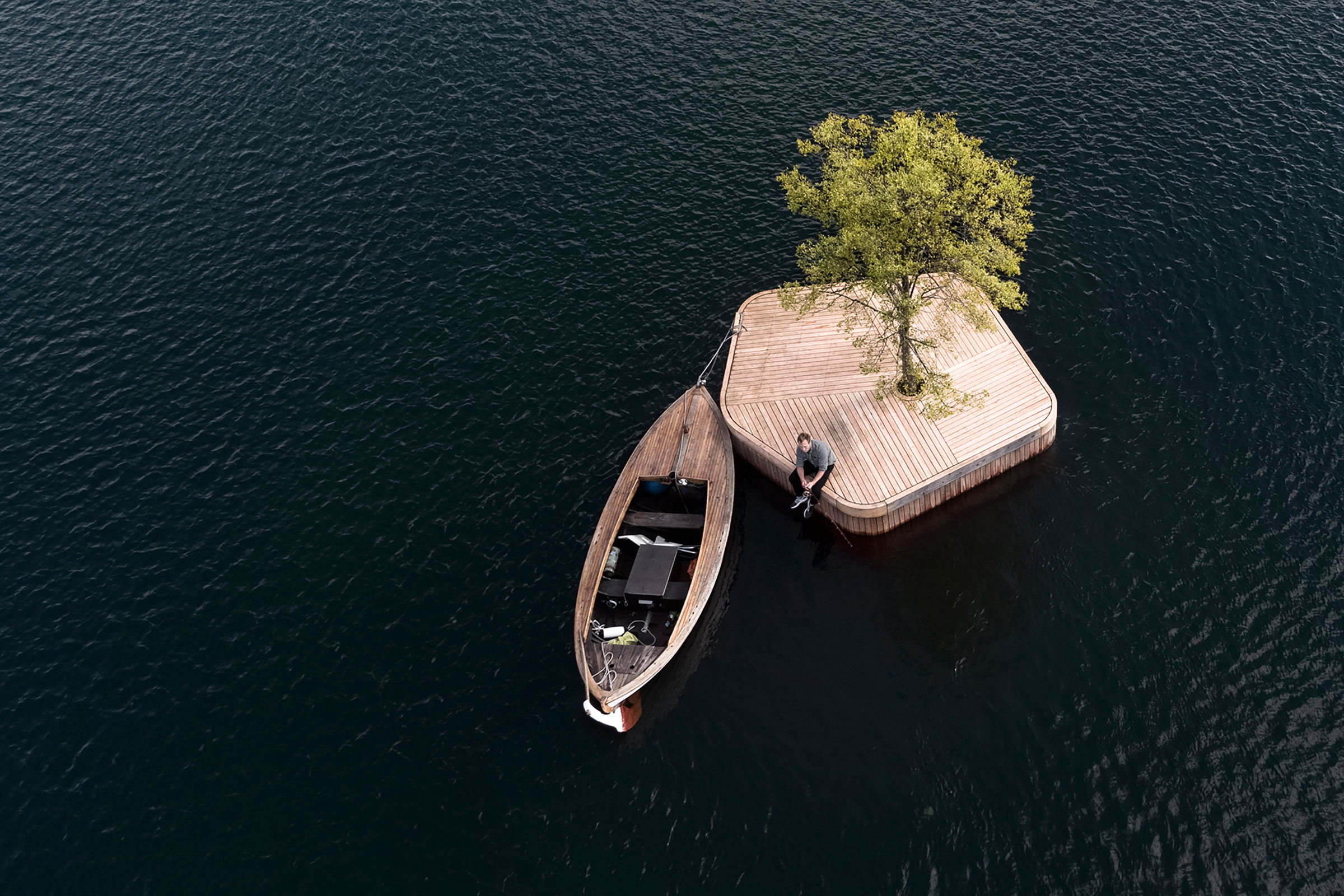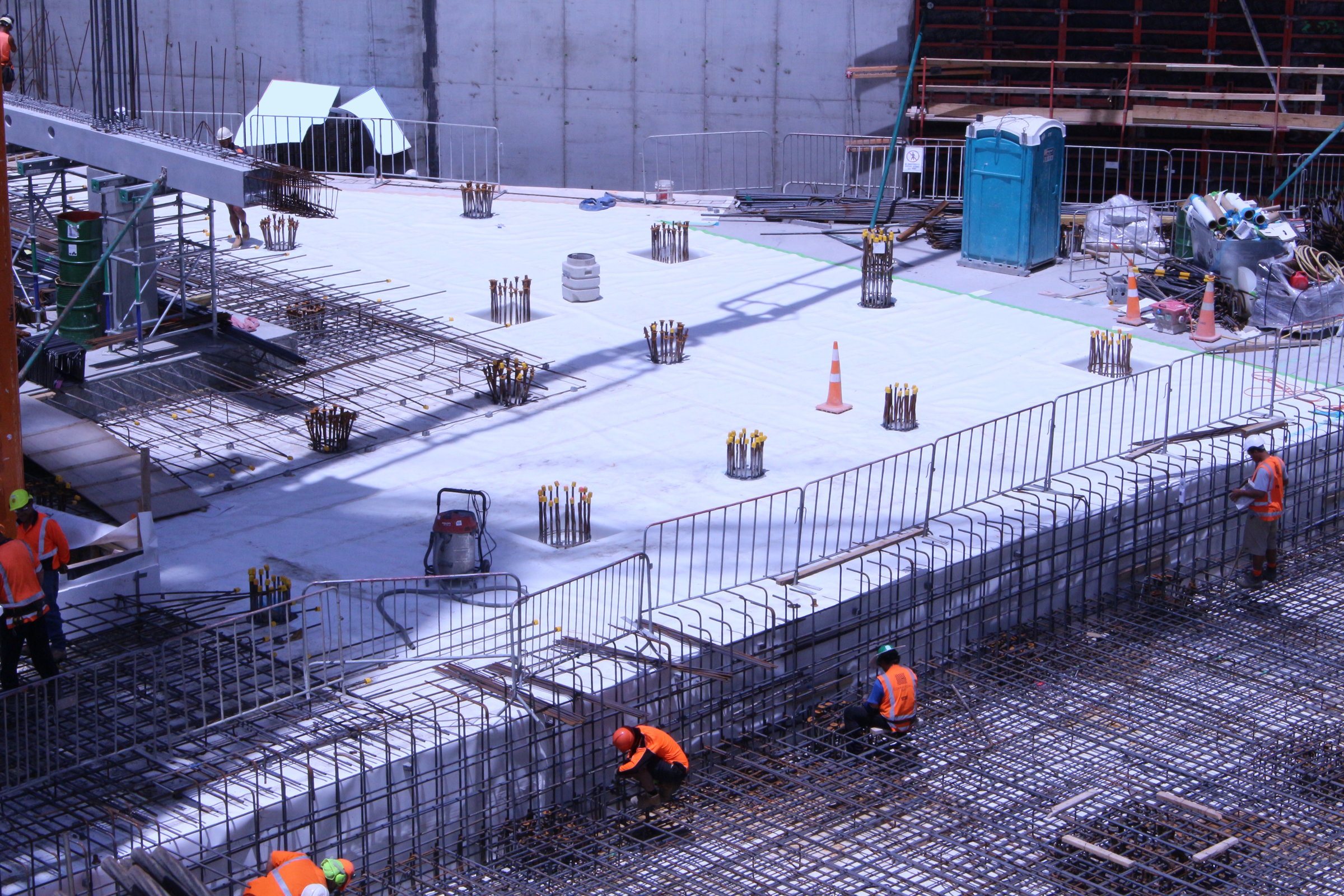Story at a glance:
- Blue tech encompasses a broad category of technologies intended to improve the world’s oceans and support a sustainable blue economy.
- There are six basic categories of blue tech: technology for monitoring, exploring, cleaning, and conserving/restoring marine ecosystems, as well as technologies that facilitate sustainable marine transportation/trade and renewable energy generation.
- Tidal energy generators, observation buoys, remote operated rovers, and artificial coastlines are all examples of blue tech.
Whether it’s their role in helping regulate global temperatures, their ability to absorb excess carbon emissions, or the fact that they generate 50% of the oxygen we need to survive, oceans serve as the foundation upon which all life is built.
Oceans feed us, enable international trade, stimulate economies, and more—and blue tech helps us sustainably leverage these vast pools of resources to their full advantage.
This article aims to provide an introductory overview to the ever-expanding world of blue tech by exploring the field’s various categories and taking a deeper look at a few real world examples.
What is Blue Tech?
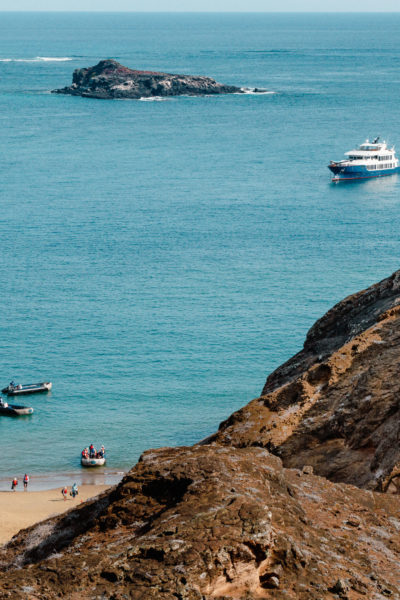
Blue tech describes those technologies and systems designed to improve our world’s oceans and support a new blue economy. Photo by Chris Howe
Blue technology, or blue tech, refers to a broad category of technologies, systems, and projects designed to improve the world’s oceans and support a responsible blue economy—something the National Oceanic and Atmospheric Administration (NOAA) defines as “a sustainable and equitable ocean and coastal economy that optimizes advances in science and technology to create value-added, data-driven economic opportunities and solutions to pressing societal needs.”
Blue tech is commonly used in reference to those technologies developed with the intent of cleaning or remediating marine ecosystems, but actually encompasses a much wider range of technologies designed to help us better understand, protect, utilize, and conserve oceanic resources.
Types & Examples of Blue Tech
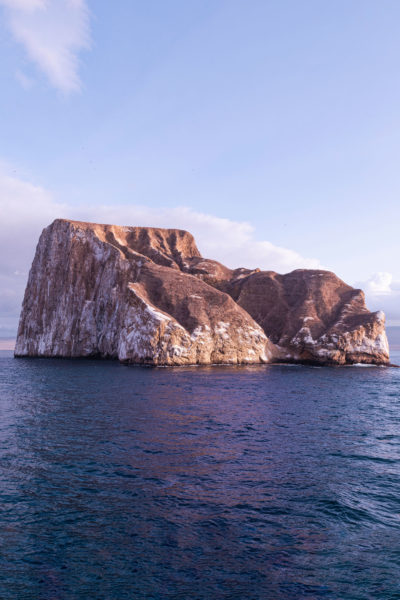
Photo by Chris Howe
Generally speaking there are six basic categories of blue technologies: those used for monitoring, those used for exploration, those used to clean and remediate ocean ecosystems, those used in conservation and restoration efforts, those used to reduce the impact of marine transportation and trade, and those used to generate renewable energy from marine processes.
Monitoring
The technologies used to monitor our oceans and their ecosystems are important. In an ever-changing world, being able to accurately monitor and assess changes is integral to keeping marine environments—and the communities and economies that rely on them—safe and healthy.
Blue technologies help scientists monitor a range of factors, variables, and conditions, including:
- Contaminants. Though big spills are (thankfully) rare, thousands of smaller oil/chemical spills happen each year; sensors and other monitoring technology can help detect contaminants early on, reducing the harm such spills might cause to oceanic ecosystems.
- Algal blooms. Scientists use sensors, planes, satellites, and water testing to monitor and forecast harmful algal blooms (HABs) that develop in response to nutrient inundation or changing water conditions; large HABs can produce toxins that may kill or otherwise endanger fish, marine wildlife, and even humans.
- Coastal erosion. Tools like light detection and ranging (LIDAR) technology allow us to determine changes in coastal elevation while aerial and satellite imagery inform shoreline maps that track changes in land cover over time.
- Sea level rise. Tide gauges and satellite altimeters help monitor and track sea level rise, which in turn helps estimate future sea level changes and inform coastal flooding preparedness/response measures.
- Weather conditions. Buoys, satellites, and underwater Argo floats help scientists monitor oceanic weather and predict El Niño/La Niña events determined by precise water temperature measurements.
Ocean monitoring helps us predict weather, anticipate and prepare for disasters, detect and respond to marine pollution, make decisions regarding coastal development, understand how biodiversity influences and responds to ocean conditions, and more.
Tech Spotlight: Observation Buoys
Monitoring the world’s oceans is a herculean task, one that is made much easier through the deployment of observation buoys, or floating devices that have been designed to gather one or more types of marine data.
Some buoys are left to drift with the currents, gathering data as they go, while others are moored to the ocean floor in order to collect regional data over long periods of time. NOAA’s moored autonomous pCO2 (MAPCO2) buoys, for example, are designed to measure and monitor seawater variables like temperature, salinity, pH, and the partial pressure of CO2 every few hours as a means of tracking ocean acidification.
Exploration
According to NOAA, approximately 26.1% of the global seafloor has been mapped as of June 2024, but a much smaller percentage of the ocean has actually been explored, with most estimates placing the figure at a conservative 5%. Exploring our world’s oceans is crucial to understanding and protecting them, as well as understanding how the ocean impacts (and is impacted by) other factors—and exploratory blue tech is a valuable asset when it comes to conducting expeditions.
Exploratory blue tech covers a wide range of innovative solutions, encompassing everything from research vessels and sonar to submersibles and underwater drones. These technologies enable new discoveries in the fields of biology, chemistry, geology, archaeology, maritime history, and more.
Tech Spotlight: Marine Rovers
Marine rovers are submersible robotic vehicles designed to help scientists safely explore oceanic environments whose conditions are inhospitable to humans. Rovers generally fall into one of two categories: remotely operated vehicles (ROVs) and autonomous underwater vehicles (AUVs).
ROVs are controlled by a person or persons located onshore or onboard a ship. These devices are unmanned, highly maneuverable robots that use a combination of cameras, lights, robotic arms, sonar, and other marine instruments to explore deep sea environments. ROVs allow scientists to observe illusive benthic organisms, discover new species, locate shipwrecks, and even inspect or maintain submersed equipment.
With the rise of live streaming services in recent years, ROVs have also become valuable educational and awareness-raising tools, capable of broadcasting live video for anyone with an internet connection to watch. Ocean Exploration Trust—a nonprofit launched in support of the Ocean Exploration Program—regularly conducts ROV expeditions from their Nautilus research vessel and livestreams the footage via YouTube.
AUVs, on the other hand, operate entirely without human input—they are pre-programmed to complete a specific task, such as mapping the ocean floor and/or taking photos. Many AUVs also perform double duty, serving as both exploratory and monitoring devices. Once an AUV has completed its mission, it returns to a predetermined location and is retrieved by researchers for data analysis.
Ocean Cleanup
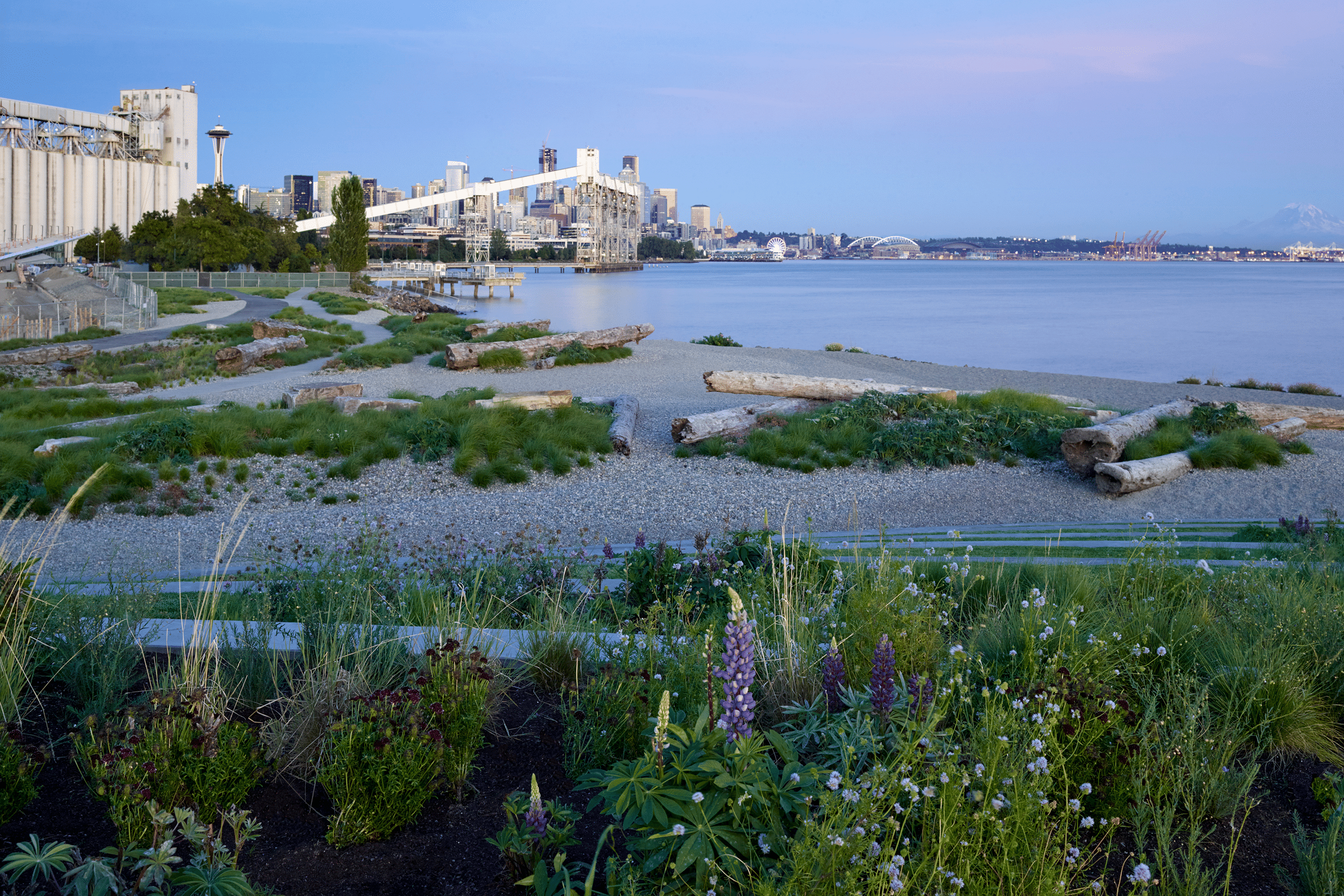
Expedia Group commissioned Surfacedesign to improve public enjoyment of its headquarters’ 2.6 waterfront acres. Photo by Marion Brenner
Those devices and technologies used to remove trash and other pollutants from our oceans are perhaps the most well-known type of blue tech, made popular in recent years by the marked increase in ocean cleanup organizations and programs around the world. This category of blue technologies has long included things like floating net booms and human-operated beach sifters, but has since expanded to include more advanced solutions like solar-powered robots that remove waste from beaches (4Ocean’s BeBot) and the ocean’s surface (RanMarine’s WasteShark).
Scientists have even leveraged the use of satellites and AI to help identify and track large patches of floating garbage and microplastics, making it easier to hone in on and target cleanup efforts.
Tech Spotlight: Artificial Coastline Systems
Employed extensively by The Ocean Cleanup—a nonprofit that aims to remove 90% of all floating ocean plastic by 2040—artificial coastlines are simplistic in their design and function, but represent one of the single most effective methods for retrieving large amounts of ocean-borne plastics.
Deployed primarily in the Great Pacific Garbage Patch, The Ocean Cleanup’s current artificial coastline model, System 03, consists of a large U-shaped barrier with a retention zone in its middle. The three-meter-deep floating system is towed along behind two ships, funneling plastics and other garbage—ranging anywhere from a few millimeters to tens of millimeters wide—into the retention zone. To ensure maximum efficiency, The Ocean Cleanup uses computational modeling to target garbage hotspots and employs smart steering measures to correct direction and maintain appropriate speeds.
In an effort to protect marine life during these excursions, The Ocean Cleanup includes multiple safeguards in all of their artificial coastline systems, including escape aids, safety hatches, breathing hatches and rings, and acoustic deterrents.
Once the system is full, the barrier is closed off and the back of the retention zone is detached, hauled aboard, emptied, and reattached. This process continues until both ships’ onboard containers are full, at which point the garbage is transported back to the mainland for sorting and recycling. Since 2019, The Ocean Cleanup has successfully removed hundreds of tons of garbage using these artificial coastlines.
Conservation & Restoration
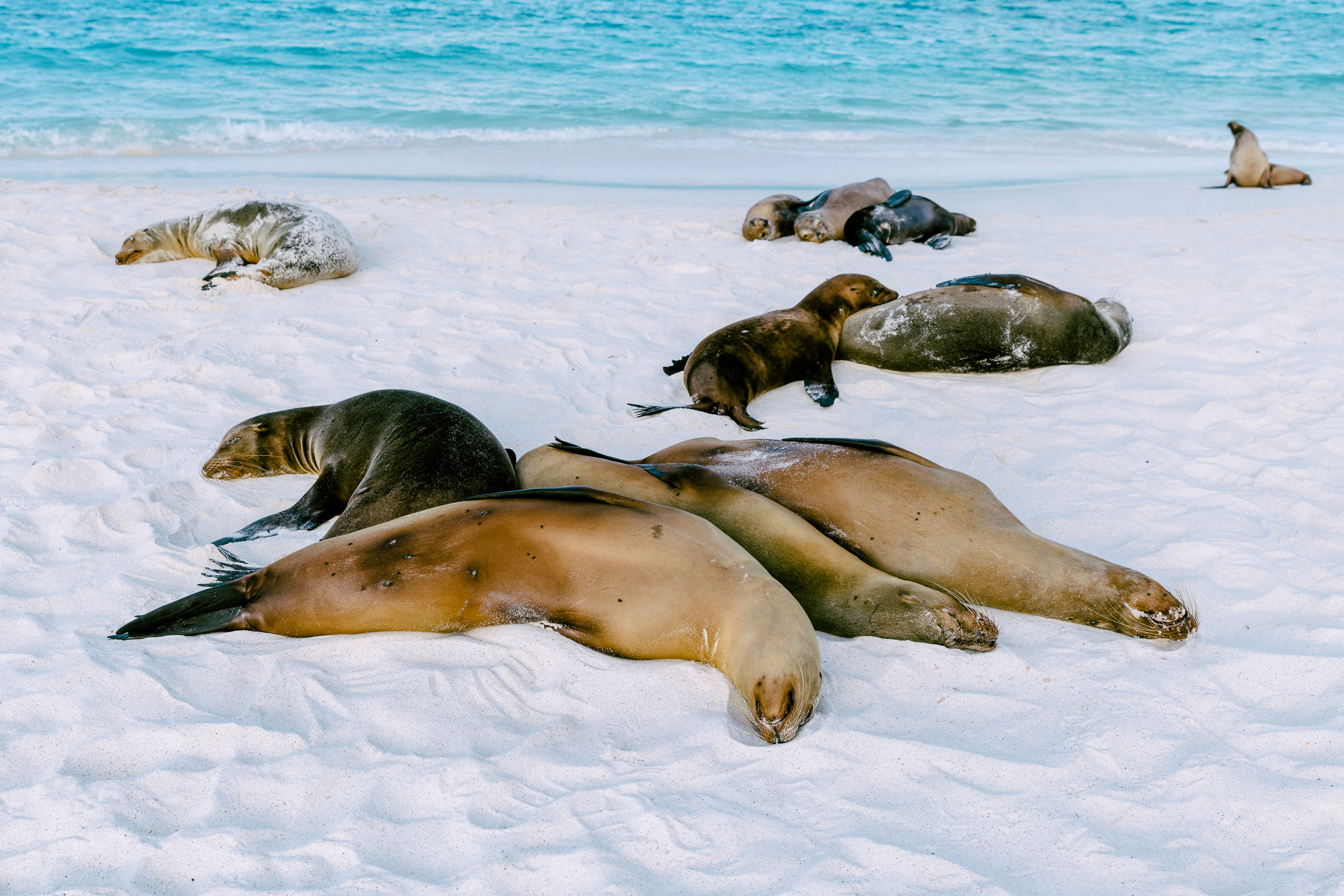
Blue technologies focused on conservation and restoration help protect marine resources, ecosystems, and wildlife. Photo by Chris Howe
Beyond cleaning and remediating oceanic ecosystems, blue tech also looks to protect, conserve, and restore marine resources so that they may continue to serve future generations. This includes inorganic resources like minerals, sand, and gravel, as well as organic resources like fish, seaweed, mollusks, and crustaceans. In the broader sense, ocean conservation can also refer to the protection and restoration of entire marine ecosystems and processes.
Some blue technologies concerned with conservation and restoration include:
- Turtle excluder devices (TEDs). Used in the fishing industry, TEDs promote sea turtle conservation by making it easy for sea turtles captured in commercial fishing/trawling nets to escape; according to data compiled by NOAA, TEDs are 97% effective in excluding turtles from shrimp trawls.
- Advanced tagging. High-tech marine tagging technologies use sensors and GPS receivers to track aquatic organisms, study their movements, and better understand how they utilize the ocean; the data collected from tagged organisms in turn helps inform conservation efforts.
- Planter robots. ReefGen has developed a remotely-operated robot called Grasshopper that allows seagrass shoots and seeds to be planted at a much faster rate than what divers can manage, accelerating restoration efforts; seagrass meadows are incredibly important oceanic ecosystems that provide habitats, improve water quality, reduce coastal erosion, et cetera, but have become scarce as a result of human activities.
Other examples of restoration-related blue technologies include sand retention structures like breakwaters, seawalls, artificial reefs, and jetties—used to hold sand in place and slow its movement, thereby reducing erosion—nanny robots that use AI to help grow and monitor baby corals for later transplanting, and traps that target destructive invasive species.
Tech Spotlight: Mineral Accretion Technology
Coral reefs are extremely vital to ocean health and provide habitats for many marine species—but they are dying at an alarming rate, with over 14% of the world’s reefs having disappeared since 2009. This is largely a result of coral bleaching, a phenomenon caused by increasing ocean temperatures and carbon dioxide levels, but reefs are also destroyed by invasive species, disease, deep-sea bottom trawl fishing, and land-based pollution runoff.
Damaged reefs can be restored in part, however, through the combination of artificial reefs and mineral accretion technologies. Artificial reefs are man-made structures designed to mimic natural reefs and are typically made from concrete and/or steel, with the latter being necessary for the application of mineral accretion technologies. Once established, artificial reefs are then planted with corals and other aquatic organisms.
Mineral accretion technology applies low voltage electricity to artificial metal reef structures, a process that causes minerals like calcium to “fall” out of the water onto the artificial reef. Planted corals—or rather, the polyps that make up coral colonies—can then use these minerals to build their outer skeletons, thus expanding the reef over time. Corals planted on these electrified reefs are able to grow 3 to 4 times faster than normal and are more resilient in the face of disease and coral bleaching events.
Transportation & Trade
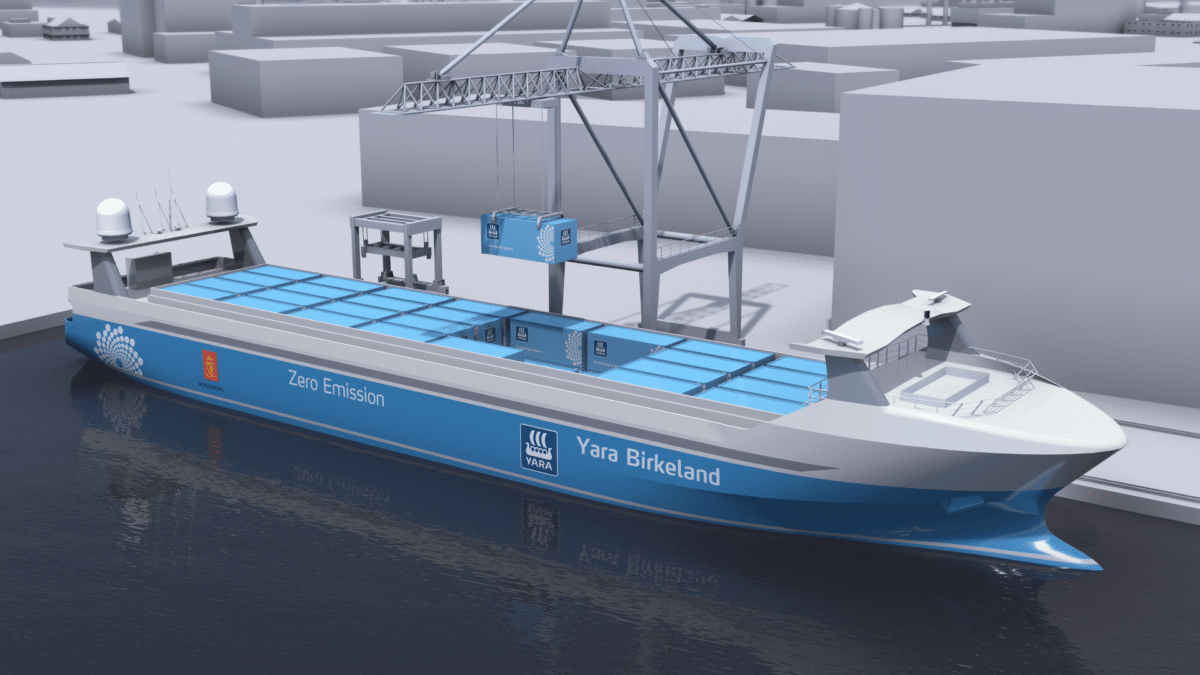
The Yara Birkeland all-electric container ship eliminates 40,000 truck journeys per year, reduces dust and local pollution, reduces CO2 emissions, and improves road safety in densely populated areas. Photo courtesy of Yara Birkeland
Maritime trade is an undeniably integral component of the global economy, with approximately 80% of all global goods—or roughly 11 billion tons—being transported via cargo ships each year. The economic gains generated by oceanic trade, however, come with a whole host of environmental repercussions, including:
- Air pollution. Almost all marine freighters rely on diesel fuel for power and so emit carbon emissions as they sail, increasing air pollution and facilitating anthropogenic climate change; on average, maritime transport produces over 1,000 million tons of CO2 annually, accounting for approximately 2 to 3% of global greenhouse gas emissions.
- Introduction of invasive species. Many cargo ships intentionally take on what’s called ballast water to stabilize themselves, of which is periodically emptied and refilled while at sea; this emptying of ballast water, however, can also introduce invasive plants and animals into vulnerable aquatic ecosystems, negatively impacting marine biodiversity.
- Water pollution. Ballast water isn’t the only water that freighters dispose of, however, with many ships dumping untreated sewage at sea as well.
- Habitat destruction. Increasing vessel traffic can stir up mud and disturb vegetation, resulting in algal blooms that destroy marine habitats; anchors, lost shipping containers, and other marine debris can also damage coral reefs and other aquatic ecosystems.
- Collisions. Hundreds of thousands of marine animals are injured by or die from boat collisions each year, with whales, dolphins, manatees, seals, sea lions, and sharks being the most at-risk.
Blue tech in the transportation and trade sectors looks to reduce maritime shipping emissions/pollutants and the negative impacts of cargo ships on marine environments by improving ship designs and switching to cleaner fuel sources. The MV Yara Birkeland, for example, is the world’s first fully electric and autonomous container ship, one that aims to serve as a reminder of just how sustainable maritime trade can be.
Designed by KONGSBERG—a leading global maritime technology company—for Yara International, a leading global fertilizer company based in Norway, the Yara Birkeland makes short, daily trips between Porsgrunn and Larvik/Brevik to deliver fertilizer from the company’s production plant to regional shipping hubs. Operated by an innovative system of sensors, cameras, and radar, the ship emits virtually zero emissions and is much quieter than traditional container vessels.
“With an autonomous and electric container feeder, the initial investment is larger, but the operating expense is significantly lower,” Bjørn Tore Orvik, former CEO of Yara Birkeland AS, told gb&d in a previous interview. “Added benefits are removal of noise, pollution, and emissions. The ship will remove 40,000 truck journeys per year (carrying 100 containers per day), reduce dust and local pollution (NOx), reduce CO2 emissions by 700 tons per year, and improve road safety in densely populated areas.”
Tech Spotlight: Loop-Based Propellers
An often overlooked impact of marine freight transport is the noise pollution generated by cargo ships. When in operation, ocean freighters produce both engine and propeller noise, the latter of which is caused by the shape of traditional propeller blades. As they turn, bladed propellers facilitate a process called cavitation, or the phenomenon by which cavities of air (i.e. bubbles) are created in response to the water’s static pressure dropping below the vapor pressure of the dissolved gasses (i.e. oxygen and carbon dioxide) within the liquid.
Depending on the speed of the propeller, these bubbles can create up to 188 dB of underwater noise as they pop and may be heard by marine organisms 100 miles away. This can be extremely disruptive to marine fauna who rely on sound to feed or find mates and even has the potential to damage crucial organs in certain invertebrates.
In recent years, however, propeller manufacturers have begun experimenting with new, loop-based designs that produce less noise than traditional bladed propellers. Sharrow Marine, for example, has developed the Sharrow Propeller, whose bladeless design greatly reduces or wholly eliminates cavitation altogether. This not only reduces underwater noise but also improves propeller efficiency, increases ship speed, enables greater handling, and reduces collision-related injuries.
Renewable Energy
Oil spills are some of the largest and most disruptive disasters when it comes to marine health—and they remain an ever-looming threat as long as we continue to use fossil fuels as our primary source of energy. Making the transition to green, renewable energies is necessary to reduce the likelihood of spills and curb anthropogenic climate change. And luckily, the ocean can help with that.
There is an entire subcategory of blue tech devoted to the generation of clean energy via oceanic processes, with wind and tidal power being the two primary sources. Offshore wind farms produce electricity by way of wind blowing across the sea and are considered much more efficient than onshore wind turbines due to the lack of obstacles, greater consistency, and overall higher wind speeds.
Tech Spotlight: Tidal Energy Generators
Though not widely used, tidal power has the potential to be a major source of clean energy, one that is much more predictable than either solar or wind power. In the most basic sense, tidal generators are a form of blue tech that convert the energy of tidal flows into electricity. Tides are a natural phenomenon resulting from the gravitational interaction between the moon/sun and Earth’s rotation, making tidal power an effectively inexhaustible form of renewable energy.
There are currently three types of tidal generator technologies in use: tidal stream generators, tidal barrages, and tidal lagoons.
- Tidal stream generator. Similar to how wind turbines use the kinetic energy of wind to generate electricity, tidal stream generators utilize the kinetic energy of moving water to power turbines—the latter, however, is much more efficient; tidal stream generators are considered the cheapest and least disruptive means of harnessing tidal energy.
- Tidal barrage. Typically spanning the full width of tidal estuaries, tidal barrages are dams that use the potential energy differences between high and low tides to produce electricity; as sea levels rise and the tide comes in, tidal power is temporarily increased as water flows into a large basin behind the dam; this potential energy is then released as the tide recedes and water flows through large turbines in the dam, creating electrical power.
- Tidal lagoon. Tidal lagoons are circular retaining walls embedded with turbines that also utilize potential energy differences to generate power; tidal lagoons are functionally similar to tidal barrages but are entirely artificial and do not contain pre-existing ecosystems.

